Every Christmas, I like to make a Prime Rib roast. You can usually find “prime” grade standing rib roast at Costco the week of Christmas. Otherwise, you can usually find “choice” grade at Costco or the supermarket. ”Prime” grade beef is usually double the price of the “choice” grade… and frankly, it tastes the same to me, so I don’t think it’s worth it for “prime”. Last year, we paid about $160 for a 4-bone prime-grade standing rib roast… and this year, I’ve made several choice-grade standing rib roasts, paying anywhere between $38 – $80. (I got lucky a few days ago and found standing rib roast on sale at the supermarket, so I only paid about $38 this time!!!!)
The first time I ever made a prime rib roast, I followed the directions of the recipe I found EXACTLY. I wanted to make sure it turned out perfect… so I bought a digital meat thermometer with a probe (which I HIGHLY recommend to measure the temperature of your meat precisely). As the recipe instructed, I removed the roast at 130 degrees F for “medium-rare”, and after allowing to rest… I carved it. And what did I get? A well done, ugly BROWN roast. No pink in the middle at all. We ate it… but I was really disappointed by the outcome. It felt like a waste of expensive meat. :(
Since then, I’ve perfected the technique. Don’t listen to all the recipes and websites telling you to remove the roast from the oven when the center reaches 130 degrees… if you do so, you will end up with a well-done ugly BROWN in the middle roast like I did that first time! Pull your roast from the oven when it reaches 115 degrees, then rest it 20-30 minutes on the counter top so that the juices redistribute through the roast. Trust me! While the meat is resting, the temperature will continue to rise and will hit about 128-130 degrees for a perfect medium-rare, that is nice and pink in the middle.
If you have guests that prefer their meat more on the well-done side, the end pieces of the roast will be more to their liking than the middle pieces. Also, you can use the old restaurant trick, and poach a couple slices of prime rib in the simmering au jus to make them more well-done (if needed).
I do recommend using an electric knife to slice the roast – it will be quicker, and much easier on your arm muscles! Last time I made prime roast, I told my husband that I wanted an electric knife… and he poo-poo’ed that idea, saying: “Why do you need an electric knife? You’ll only use it once a year, and it will be a waste of space.” Unfortunately I listened to him, and as I was sawing and sawing away at the roast (my arm muscles getting more and more tired) I wanted to strangle him. This time, I got an electric knife, and boy was I happy with the ease of cutting! Electric knife, baby! I bought the Oster Electric Knife from Target for about $26 – it’s a little bit cheaper on Amazon.com, in case you are looking for one.
Merry Christmas!!!!
Prime Rib Roast:
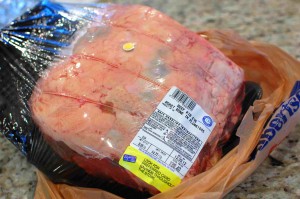
Buy a "standing rib roast". Prime grade is hard to find unless you go to Costco, but you can usually find "choice" or "select" at the grocery store.
- 3-4 bone standing rib roast, 6-8 lbs. (“prime rib”)
- 1 T. olive oil
- 1 tsp. sea salt
- 2 cloves garlic, minced
- 2 tsp. dijon mustard
- 1 /2 T. chopped fresh rosemary
- 1 tsp. chopped fresh thyme leaves
- 1/2 tsp. black pepper
Au jus:
- fond (browned bits from the roasting pan)
- 3 c. beef stock
- 1 c. red wine
- salt/pepper to taste
Horseradish sauce:
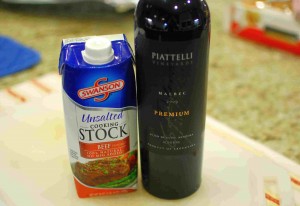
For the au jus, make sure you use a good quality wine - something you enjoy the flavor of for drinking.
- 1 c. sour cream
- 4 tsp. horseradish
- 1/2 tsp. dry mustard or dijon mustard
- 1/2 tsp. salt
- 1/4 tsp. black pepper
Yorkshire pudding:
- 1 c. flour
- 1 1/2 tsp. salt
- 2 eggs
- 1 c. milk
- 1 T. beef roast fat (drippings)
- 2 T. beef roast fat (drippings), divided into 1/2 tsp. portions
Prime Rib Roast: (Note: It’s best if you get your butcher to prep the roast by separating the meat portion of the roast from the ribs and the chine bones… then have it tied back on with butcher’s twine – for easy carving later. If your roast is not prepped this way – that’s fine – you will just have to carve the ribs and chine bones off the roast after cooking, before slicing the roast into prime rib portions.)
1. Bring meat to room temperature – remove from the refrigerator and allow to sit on counter for 2-3 hours covered.
2. Preheat oven to 450 degrees. Mix the remaining ingredients in a small bowl, mashing the minced garlic and herbs with the back of a spoon to release the flavors.
3. Set the roast (rib side down) in a roasting pan and slather the top and sides with the garlic-herb mixture.
4. Stick the metal probe of a digital meat thermometer into the center of the roast (so the point is in the direct center, not touching any bones). Put the roast in the oven, and close the door on the wire. Connect the wire to your thermometer and set the alarm for 115 degrees F. Cook the roast in the oven for 25 minutes at the high temperature of 450 degrees (this step is to sear and brown the outside of the roast).
5. After 25 minutes, reduce the temperature to 275 degrees. Continue cooking the roast at 275 degrees until the center of the roast hits 115 degrees F. (About 1 1/2 to 2 hours total, give or take, depending on the size of your roast.) Remove from the oven. Carefully transfer the roast to a large cutting board, and wrap the roast with foil – leaving the thermometer probe in place. Re-set the thermometer alarm for 125-130 degrees F.
6. Once the roast has rested for about 20-30 minutes and has reached somewhere between 125 and 130 degrees, carve into slices. (Separate the roast from the ribs and chine bones first – make a cut between the roast and the ribs downward. Then, cut the roast into 1/2 inch slices starting at one end. Reserve the ribs to make beef soup or stew.) You can do this with a sharp knife, but your arms will thank you if you use an electric knife instead! (If red liquid seeps out while you are cutting, don’t worry – this is NOT blood. It’s basically just protein mixed with the juices from the roast.)
Au jus:
1. Place the roasting pan over a stove top burner set to low. (Only attempt this if you have a sturdy metal pan – do not attempt this with glass, or a flimsy pan.) Add the beef stock to the pan, and using a plastic/silicone spatula or wooden spoon, scrape up the browned bits on the bottom of the pan. (The browned bits are called “fond” and are responsible for most of the flavor in the au jus.)
2. Strain, and transfer the liquid to gravy separator, or into a large measuring cup and use a turkey baster to separate the liquid from the fat. Reserve the fat for the yorkshire pudding. (The brown liquid on the bottom is the fond flavored beef stock that you will use for the au jus. The yellow layer floating on top is the fat for the yorkshire pudding.)
3. Pour the liquid into a large saucepan and add the remaining beef stock and red wine. Simmer over medium heat for 15-20 minutes, until reduced by about 1/3. (Make sure you use a good wine – something that you like to drink. The flavor of the wine will concentrate in the au jus, so don’t use a wine that is poor quality or that you don’t care for.)
4. Add salt and pepper to taste. (Remember – you want the taste to be somewhat strong – more like a sauce than a broth, as you will be dipping your meat into this for flavor.)
Yorkshire Pudding: Traditionally, this is cooked as one large “pudding”, in the same roasting pan used for the prime rib. However, I like to serve individual sized portions, so I divide the batter into a muffin pan.
1. While your au jus is simmering, set your oven to 400 degrees. Place about 1/2 tsp. beef fat into 10-11 depressions in a standard muffin/cupcake pan, and set the pan in the preheating oven for about 2 minutes (any longer and you will generate smoke).
2. Put the flour, salt, eggs, milk, and 1 T. beef fat into a blender. Blend for a few pulses, scraping down the sides with a rubber spatula in between. Pour the batter into the 10-11 depressions of the heated cupcake pan, and bake for 18-20 minutes. (It may sizzle a bit as you pour the batter in.)
3. Remove from the oven and serve hot with your roast.

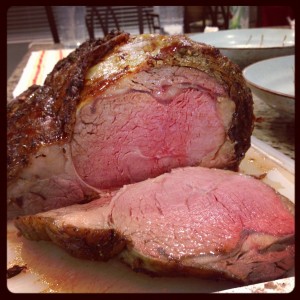
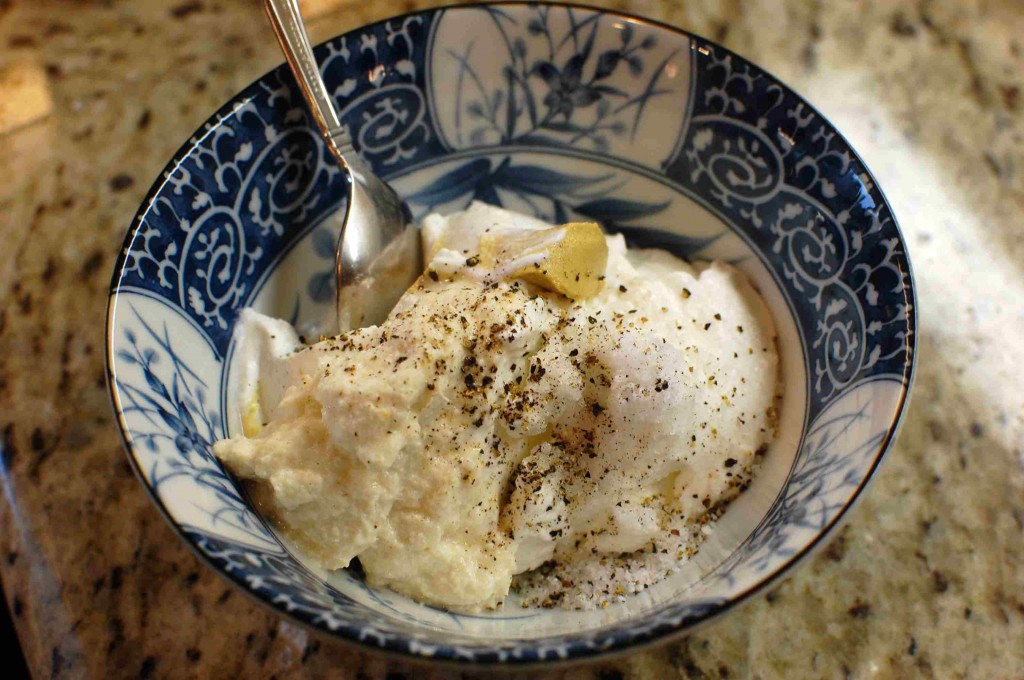
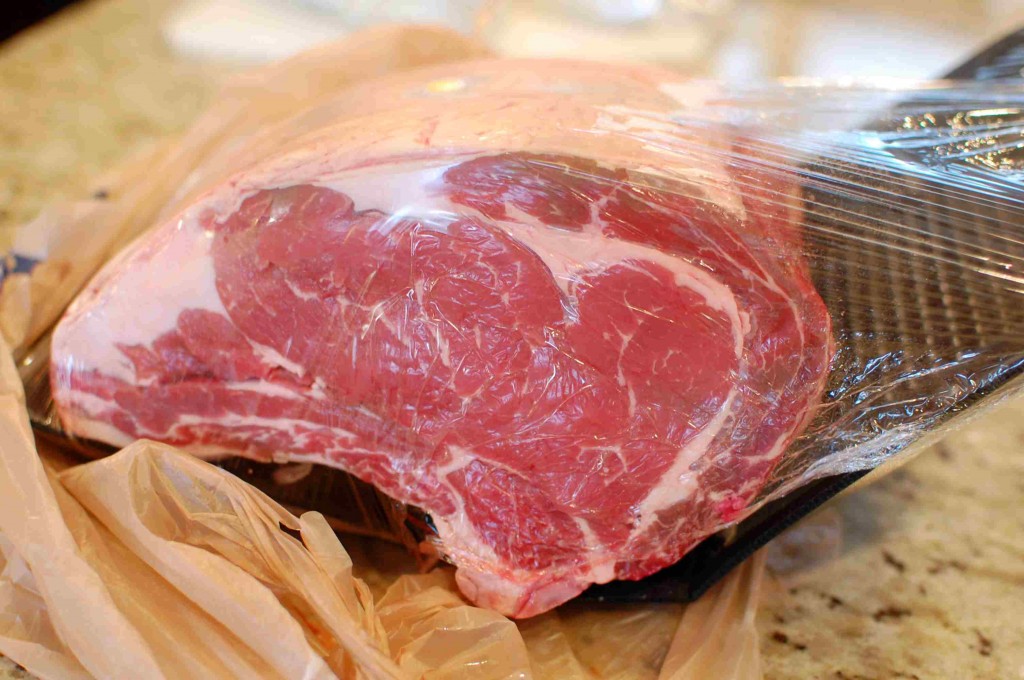
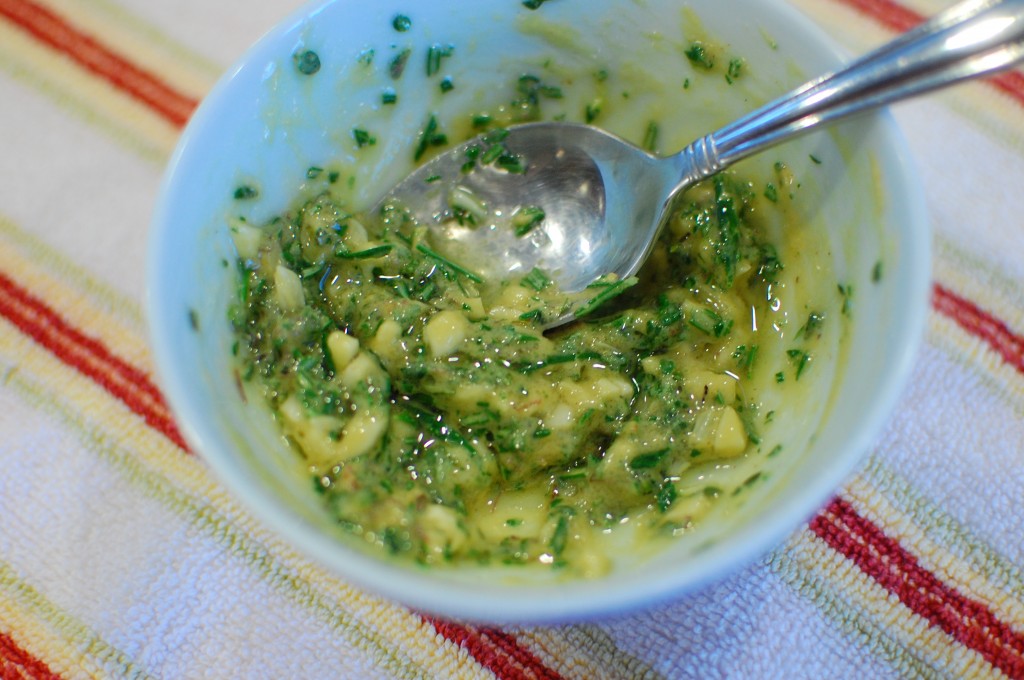
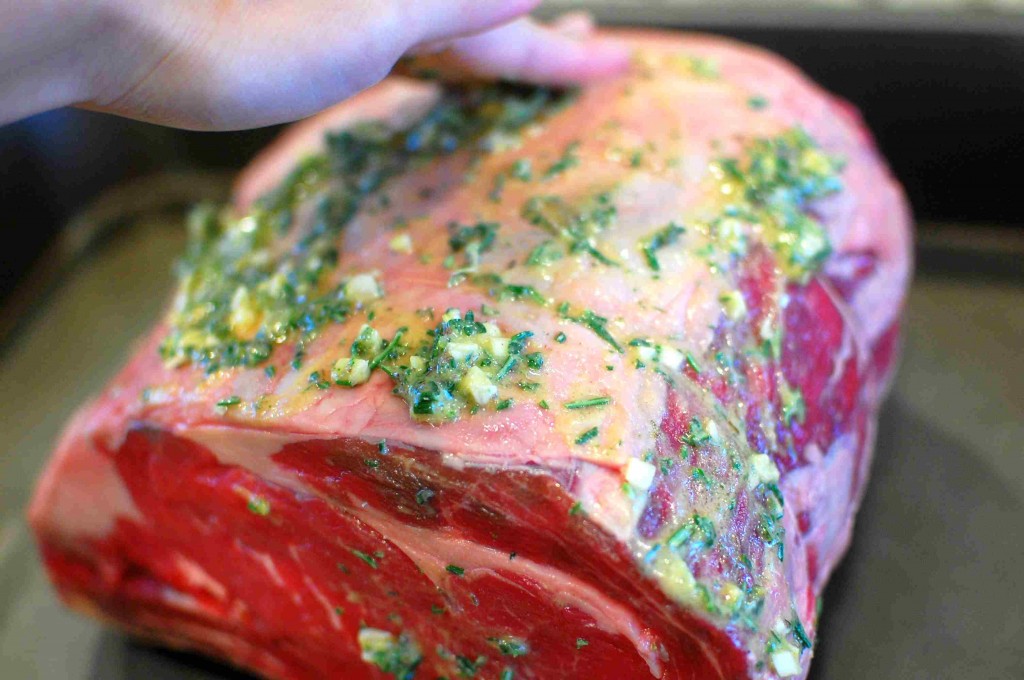
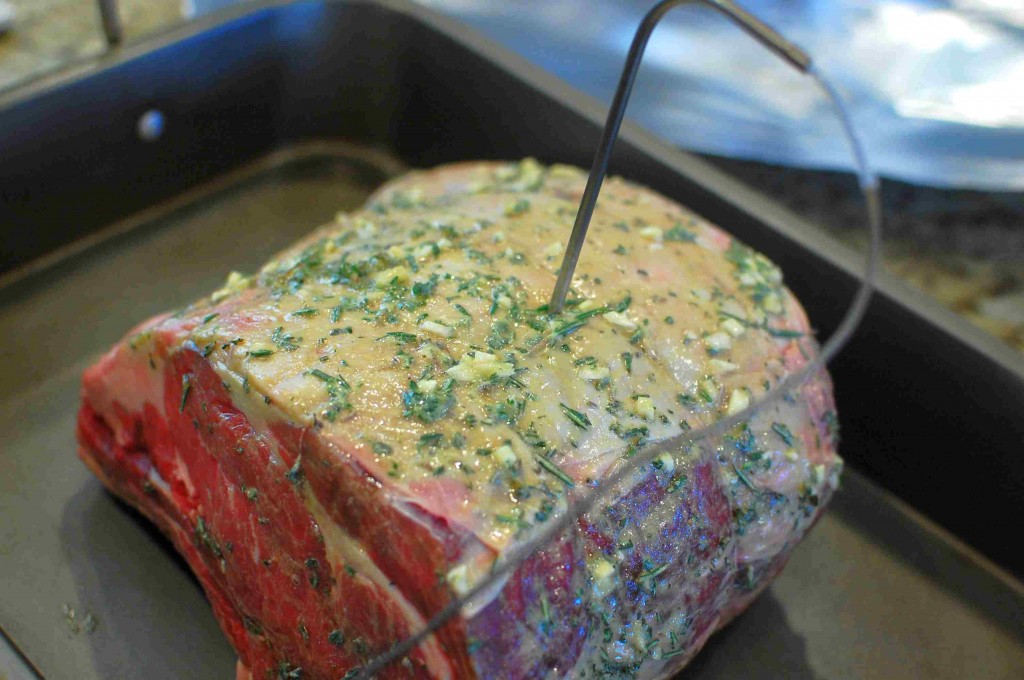
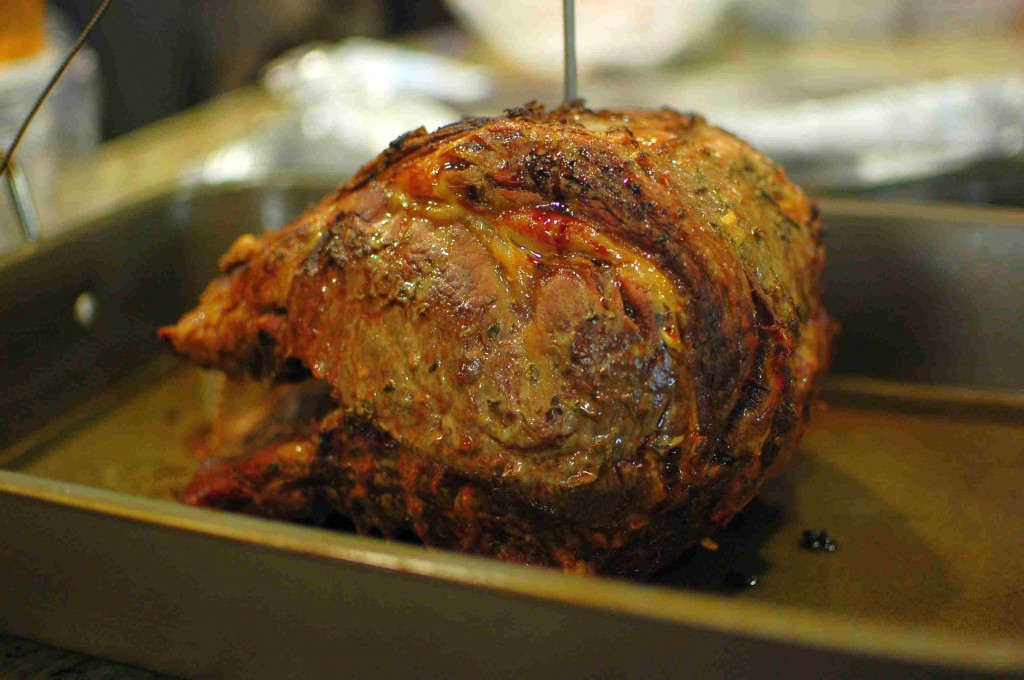
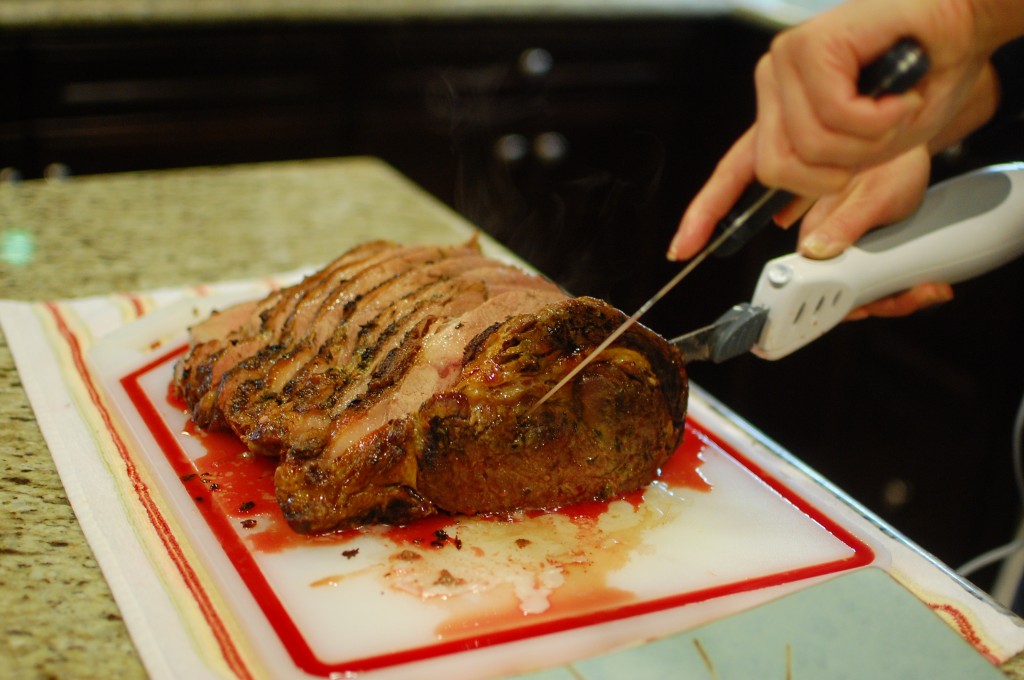
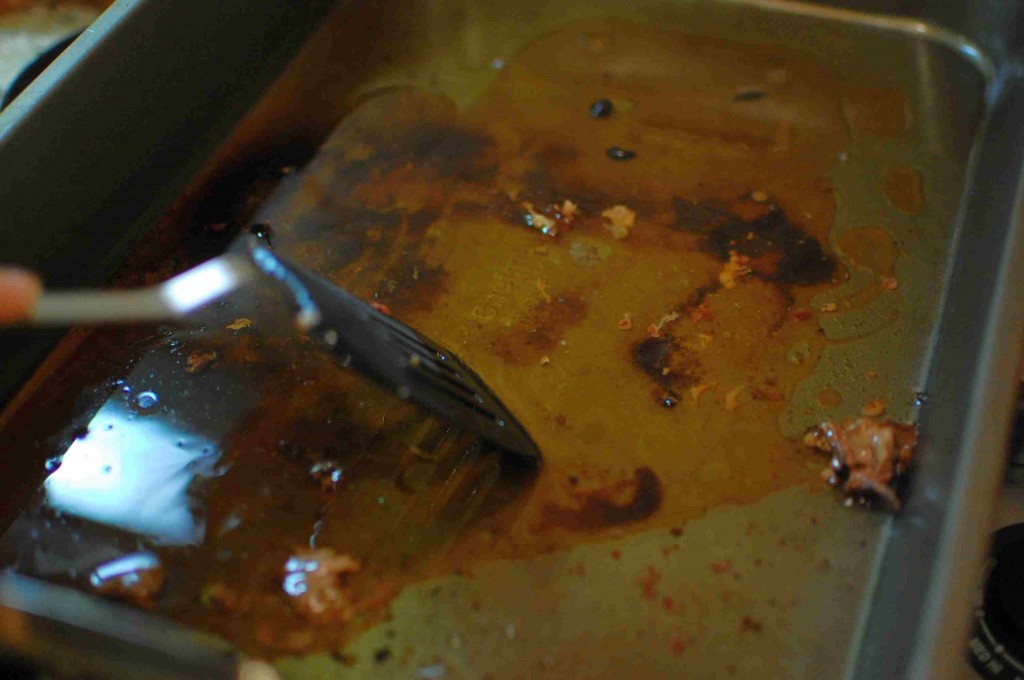
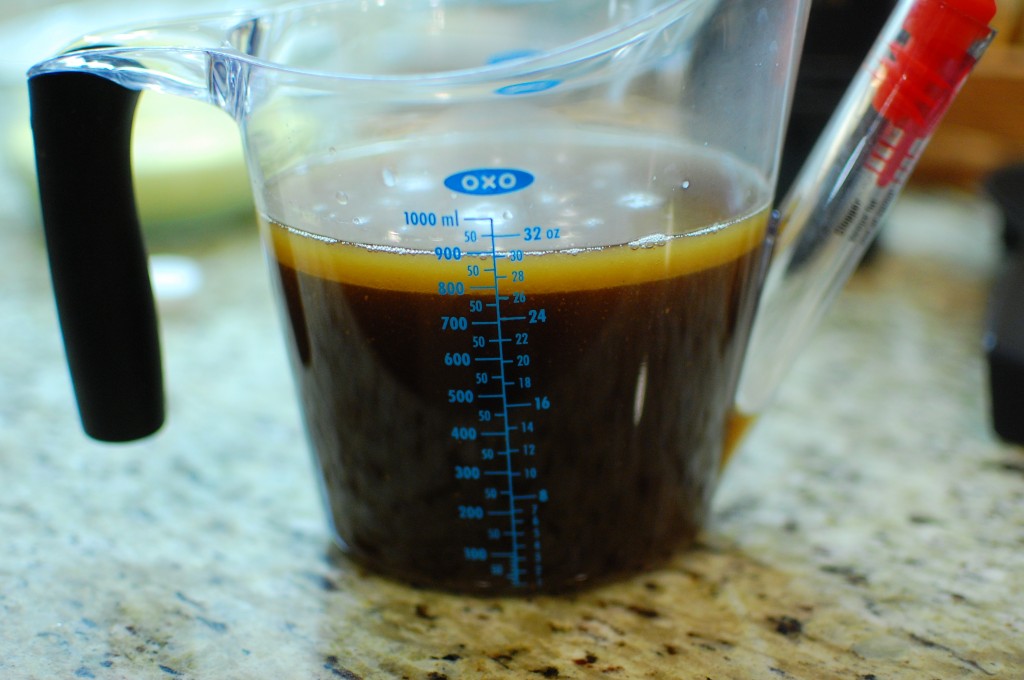
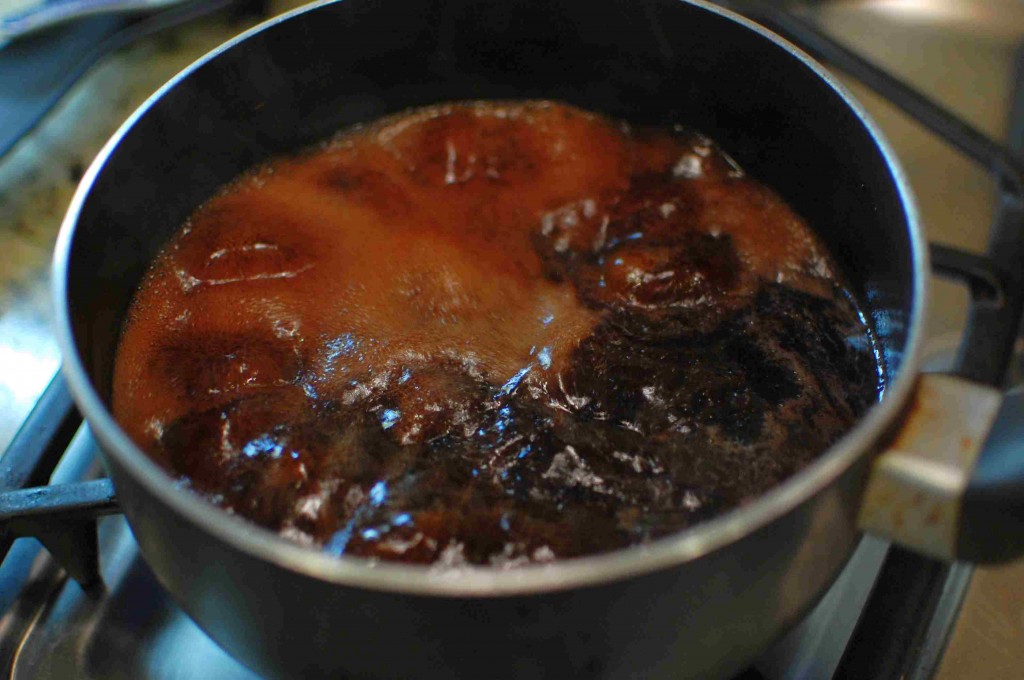
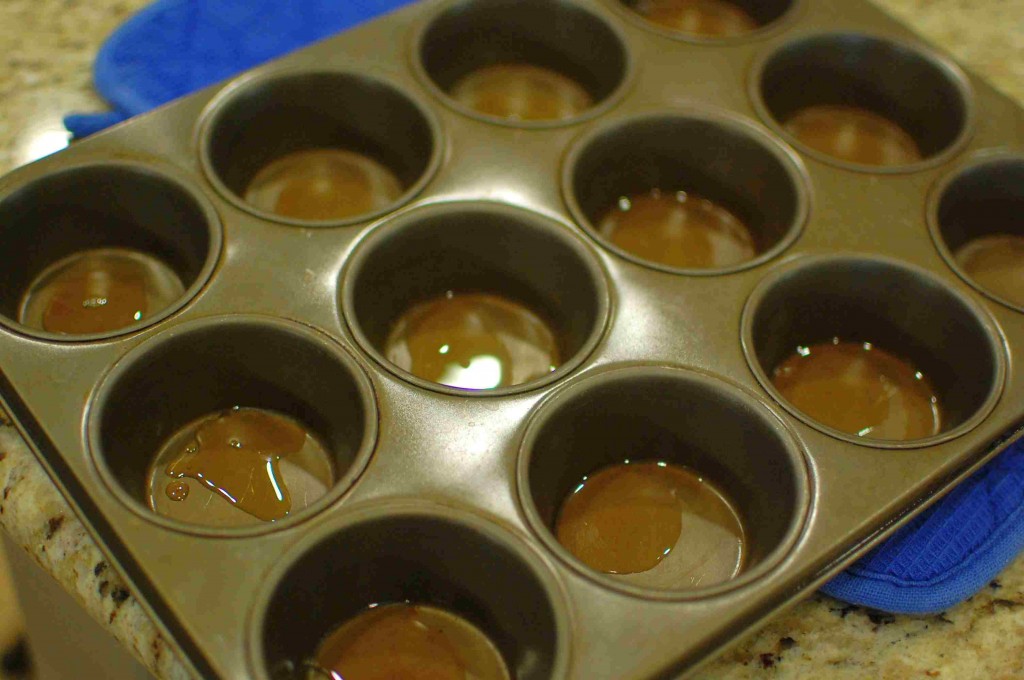
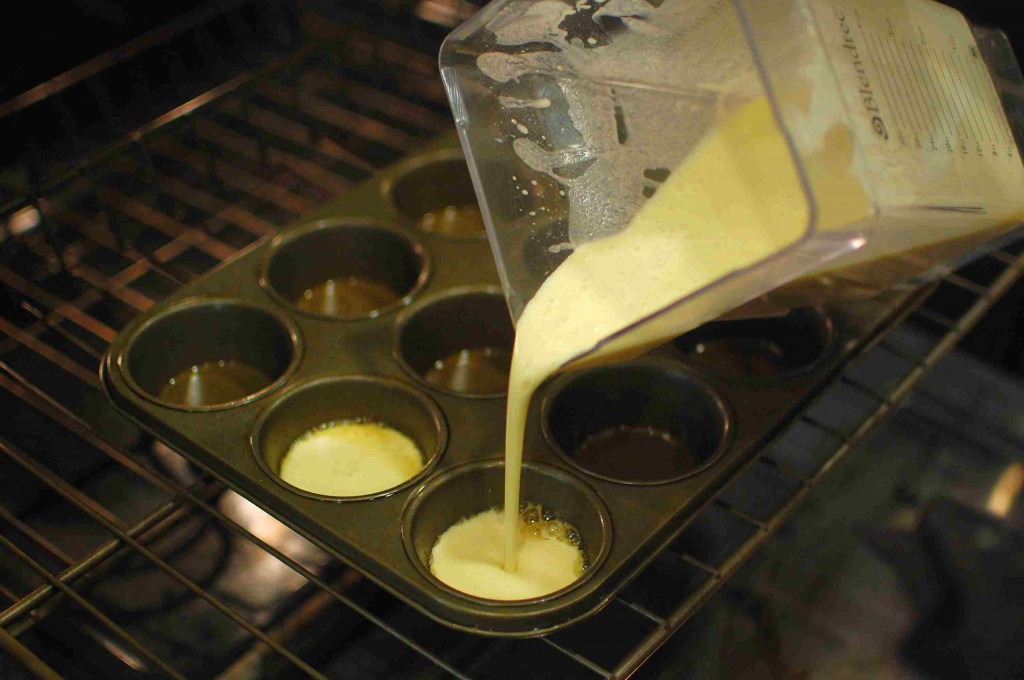
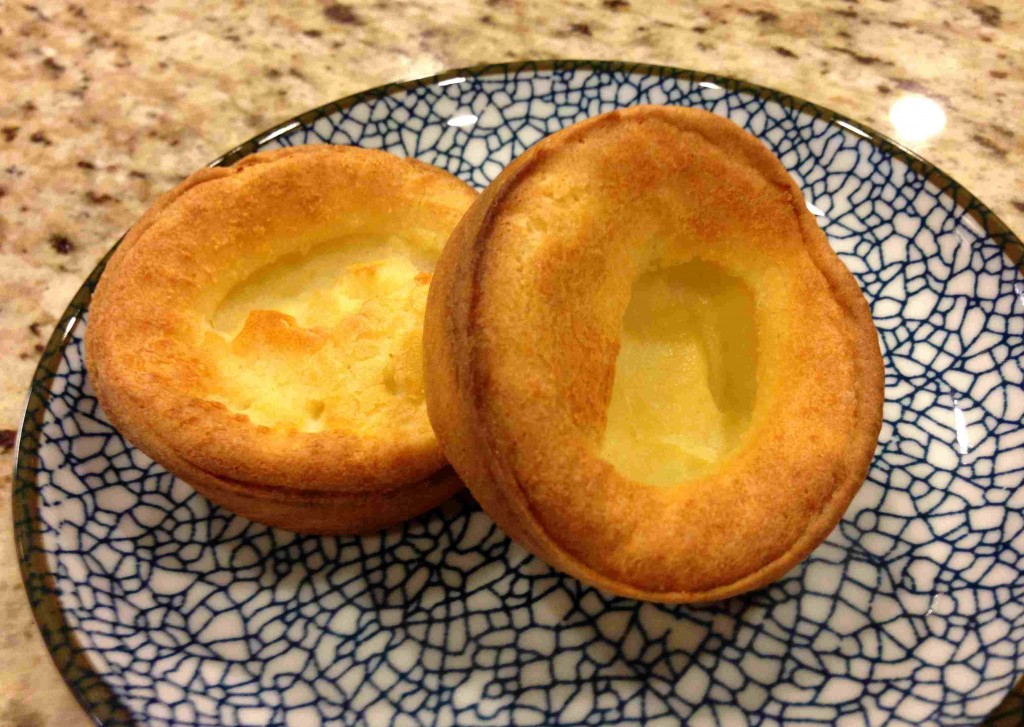


Hi Mika
I’m impressed. It s Christmas and you still find the time to post a new recipe. Thank you for all the time and effort that you have put in this blog to give us with such yummy, reliable recipes. Merry Christmas and Happy New Year to you and your family
Awww…. thanks, Amy! Merry Christmas to you and your family too!
Merry Christmas to you and your family too!
Mika,
Thank you so much for taking time out of your festivities to post another of your fabulous recipes! I haven’t tried it yet, of course, but it looks fabulous as always.
Also, Thank you so very much for posting another dinner-type recipe! Although your sweets are sublime I find that your entree and other non-sweets are equally sublime. So, again, Thank you for another recipe of the non-sweet variety!
I hope you had a lovely holiday, and hope you will have a happy New Year.
Thank you Caitlin! Happy Holidays and Happy New Year to you too!
Hi Mika.
It’s now Nov. 2013 and I came across your website and your fabulous recipes.
I always wanted to make a Prime Rib Roast and thought I would try your recipe this Christmas.
What would you suggest for side dishes and perhaps a dessert that would compliment the roast?
BTW, your tutorials are excellent!
Thanks.
Hi Pamela! Thanks for the compliment!
As far as side dishes to go with prime rib, my go-to sides are: Yorkshire pudding (baked in cupcake pans), Creamed Spinach, and some type of mashed potato – I liked to make loaded mashed potatoes with sour cream, chives, cheddar, and chopped up bits of bacon.
Here’s my recipe for Creamed Spinach:
http://www.the350degreeoven.com/2013/01/vegetables-side-dishes/parmesan-creamed-spinach-ruths-chris-creamed-spinach-copycat-recipe/
For dessert, I would go with something light(ish) – like Zabaglione and berries:
http://www.the350degreeoven.com/2012/12/italian/zabaglione-italian-custard-made-with-marsala-wine/
If you prefer something richer, then Dark Chocolate Ganache cake is always good:
http://www.the350degreeoven.com/2011/03/cake/dark-chocolate-ganache-cake-and-birthday-sheet-cake/
Hi Mika,
Can I buy the meat , freeze it then cook later? Do you think the flavor of the meat will be affected? (being frozen then defrost) Or it doesn’t matter. I’m thinking of cooking this for Christmas but try to avoid shopping for grocery on the day before Christmas.
You probably could freeze the meat and defrost it… but I worry that the quality wouldn’t be as good. If you do so, make sure you thaw it completely (center unfrozen) before you cook it. I think it’s better to just buy the roast a few days in advance – it’s probably fine in the refrigerator for several days. I’ve kept a raw roast for 3-4 days before (refrigerated) and it turned out fine.
Hi Mika,
Is it better to buy the roast with the bone or without the bone? Does it matter in term of the quality of the meat?
Most standing rib roasts will come with the bone – the main difference is that sometimes the bones are already cut off (then tied back on), sometimes the entire roast is intact (bones and all). I think the bones are important – it gives the roast something to rest on, and they add flavor. I prefer to buy the cut and tied roast though – it makes it easier to slice once done. As far as meat quality goes… I’ve spent the money on a prime grade rib roast ($190 at Costco)… and really, there wasn’t much of a difference between that and the choice grade rib roast ($85 at Costco). If you can get one with marbling – fat helps to add flavor – try not to pick out one that is too lean or it might be dry.
Hi Mika,
Merry Christmas to you and your family. How time fly. It was exactly 1 year since you post this recipe. Thank you for all your time and hard works that you put into this blog to provide us reader with such wonderful and reliable recipes. Happy New year too.
Thank you so much Amy! I hope your Prime Rib roast turned out well – Merry Christmas to you and your family!
I’ve never made a rib roast but with these instructions I feel confident enough to attempt it. The instructions are so complete. Thank you so much.
You’re welcome! Glad I could help.
I followed these instructions yesterday and it came out perfectly. Perfectly. Wish I could post a pic. Thanks so much.